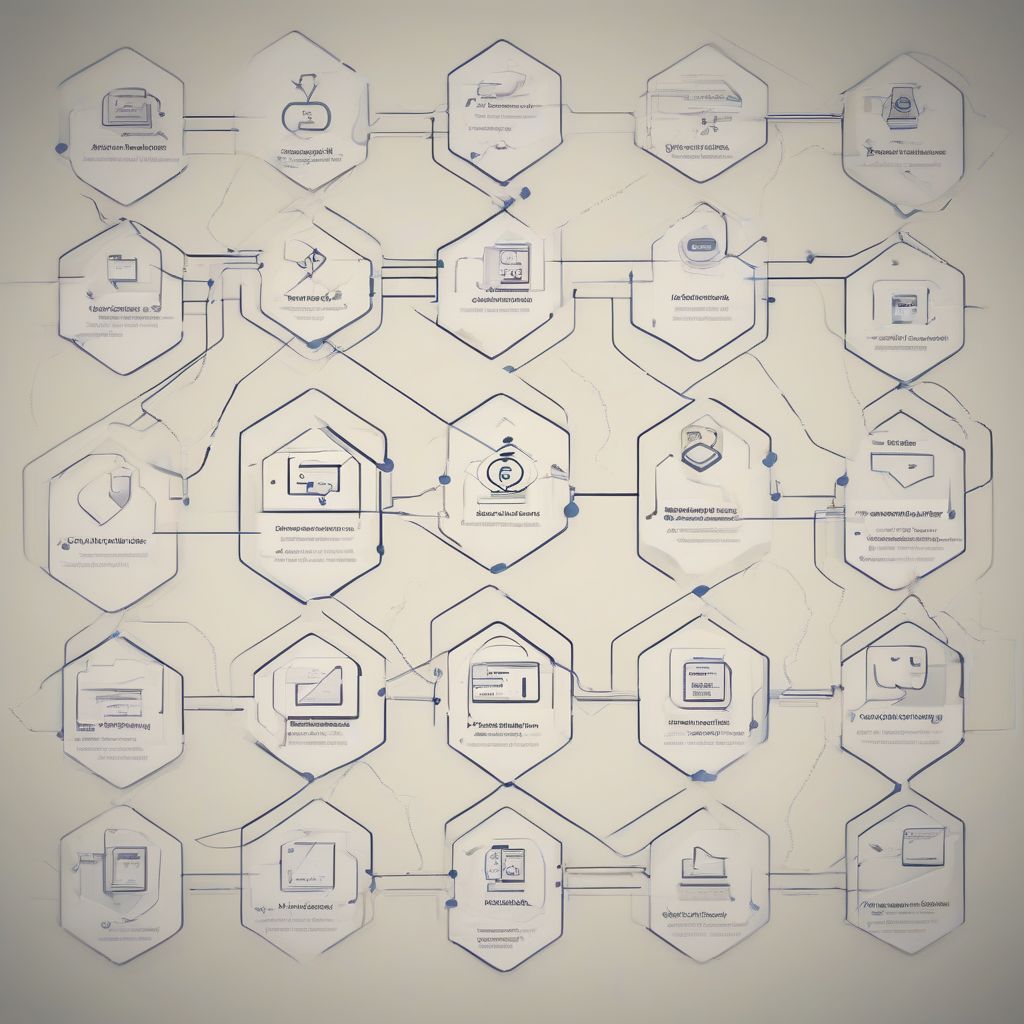Imagine crafting a stunning mobile app that seamlessly dances across iOS, Android, and even the web. This dream is entirely within reach, thanks to the magic of cross-platform development.
For years, creating separate apps for each platform was the norm, consuming valuable time and resources. Today, cross-platform development techniques offer a smarter solution, allowing developers to write code once and deploy it across multiple platforms. This approach is revolutionizing the app development landscape, but with so many techniques available, choosing the right one can feel overwhelming.
This comprehensive guide delves deep into the world of cross-platform development, exploring its various techniques, benefits, and drawbacks. Whether you’re a seasoned developer or just starting, this article will equip you with the knowledge to make informed decisions for your next project.
Understanding the Power of Cross-Platform Development
Before we dive into the specifics, let’s clarify what cross-platform development truly means. Simply put, it’s the practice of building software applications that can run on multiple operating systems or platforms. This contrasts with native development, where apps are specifically designed for a single platform like iOS or Android.
Cross-platform development offers a range of compelling benefits:
- Faster Development Cycles: Write code once and deploy it across platforms, significantly reducing development time and effort.
- Cost-Effectiveness: Leverage a single codebase, minimizing the need for separate teams and reducing overall project costs.
- Wider Market Reach: Reach a larger audience by making your app accessible on multiple platforms.
- Easier Maintenance: Updates and bug fixes can be implemented across all platforms simultaneously, streamlining maintenance efforts.
- Consistent User Experience: Maintain a consistent look, feel, and functionality across different platforms, enhancing user satisfaction.
Exploring Popular Cross-Platform Development Techniques
The world of cross-platform development is brimming with diverse techniques, each with its own strengths and weaknesses. Let’s explore some of the most popular ones:
1. React Native
Developed by Facebook, React Native is a powerful framework that allows developers to build native-like mobile apps using JavaScript and React. Its vast community support, extensive libraries, and reusable components make it a favorite among developers.
Pros:
- Near-Native Performance: Leverages native components, resulting in smooth and responsive apps.
- Large and Active Community: Benefits from a vast community that contributes to its growth and provides ample support.
- Code Reusability: Allows for extensive code sharing between iOS and Android, accelerating development.
Cons:
- Platform-Specific Knowledge: May require some platform-specific knowledge for advanced customizations.
- Limited Access to Native APIs: Accessing certain device-specific features might require bridging to native code.
2. Flutter
Created by Google, Flutter has taken the development world by storm with its fast and expressive approach. It utilizes the Dart programming language and provides a rich set of pre-built widgets for creating visually appealing and performant apps.
Pros:
- Hot Reload: Enables developers to see instant code changes, significantly speeding up development.
- Expressive UI: Comes with a comprehensive set of customizable widgets for crafting beautiful user interfaces.
- Growing Community: Boasts a rapidly growing community, providing ample resources and support.
Cons:
- Relatively New: Being a newer framework, it may have a smaller talent pool compared to more established options.
- Large App Sizes: Flutter apps tend to have larger file sizes compared to some native counterparts.
3. Xamarin
Microsoft’s Xamarin allows developers to build native iOS, Android, and Windows apps using C# and the .NET framework. Its ability to share code and leverage platform-specific APIs makes it a robust choice for enterprise-level applications.
Pros:
- Native Performance: Provides access to native APIs and UI controls, resulting in high-performance apps.
- Code Sharing: Allows for sharing a significant portion of code across platforms, reducing development time.
- Strong Microsoft Support: Backed by Microsoft, ensuring long-term support and stability.
Cons:
- Steeper Learning Curve: Requires familiarity with C# and the .NET framework, potentially posing a learning curve for some developers.
- Larger App Sizes: Xamarin apps tend to be larger compared to some other cross-platform options.
4. Ionic
Built on top of Angular, Ionic is a popular framework for crafting hybrid mobile apps using web technologies like HTML, CSS, and JavaScript. Its focus on web standards and ease of use makes it an attractive choice for web developers venturing into mobile.
Pros:
- Familiar Technologies: Utilizes widely used web technologies, making it accessible to web developers.
- Extensive Plugin Library: Offers a wide range of plugins for accessing native device features.
- Strong Community Support: Benefits from a large and active community providing support and resources.
Cons:
- Performance Limitations: Being a hybrid framework, it may not achieve the same performance levels as native or some cross-platform alternatives.
- Dependency on Web Views: Relies on web views to render the UI, which can sometimes lead to inconsistencies across platforms.
Choosing the Right Cross-Platform Development Technique
With so many compelling options, selecting the ideal technique hinges on your project’s specific needs, your team’s expertise, and your long-term goals.
Consider these factors when making your decision:
- Project Complexity: For complex projects requiring native-like performance, React Native, Flutter, or Xamarin might be suitable choices.
- Team Skills: Leverage your team’s existing skillset. If your team is proficient in JavaScript, React Native or Ionic could be a natural fit.
- Performance Requirements: If achieving near-native performance is critical, React Native, Flutter, or Xamarin are strong contenders.
- Budget Constraints: Cross-platform development, in general, offers cost savings compared to native development.
- Time to Market: If a quick launch is a priority, techniques like React Native and Flutter, known for their faster development cycles, could be advantageous.
 Cross-Platform Development Techniques
Cross-Platform Development Techniques
The Future of Cross-Platform Development
The cross-platform development landscape is constantly evolving, with new technologies and frameworks emerging regularly. As these techniques mature and improve, we can expect:
- Even Better Performance: The gap between cross-platform and native app performance is narrowing.
- Enhanced Tooling and Libraries: Expect to see more sophisticated tools and libraries that streamline development and enhance app capabilities.
- Increased Adoption: Cross-platform development is poised for continued growth and adoption as businesses seek efficient ways to reach wider audiences.
Conclusion
Cross-platform development has emerged as a game-changer in the software development world, offering a smarter and more efficient way to build apps for multiple platforms. By carefully considering the techniques outlined in this guide, you can choose the approach that aligns best with your project goals and embark on a successful cross-platform journey. Embrace the power of cross-platform development and unlock a world of possibilities for your next app idea.
[amazon bestseller=”cross-platform development”]
